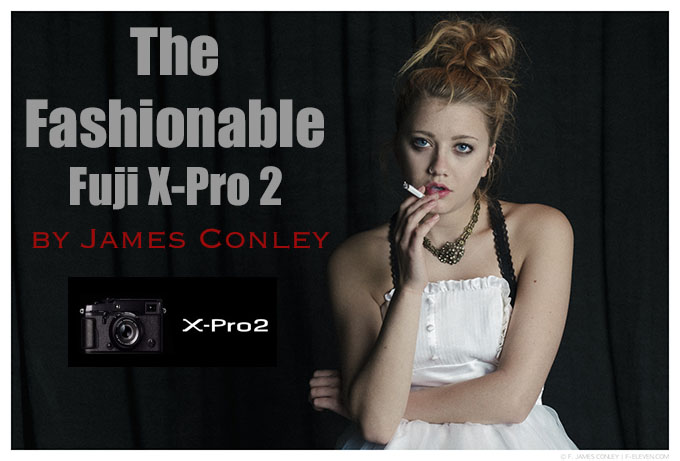
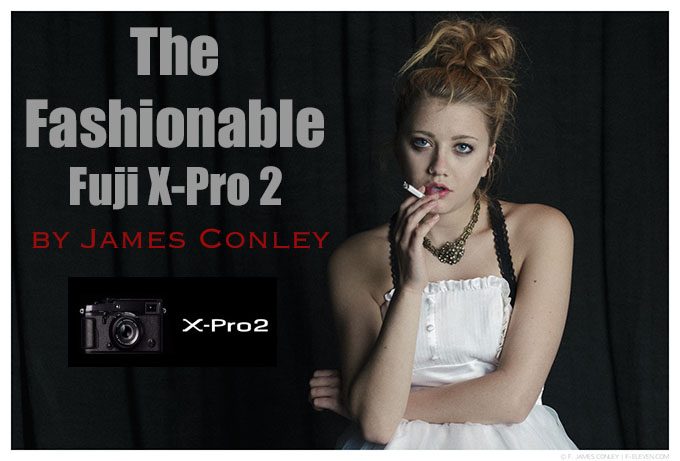
The Fashionable X-Pro 2
by James Conley
Hi Steve and Brandon. I wanted to share a fashion editorial with you, and my experience using the Fujifilm X-Pro2 in the studio.
For a few years now, I’ve relied on Fujifilm’s X-Series as my workhorse system for documentary, street, and travel photography. Originally working with an X100s and an X-E1, I’ve now added the X-Pro2 to the stable. (These days, the X-E1 is a backup body.) However, for studio work I’ve continued to rely on Canon.
Studio work involves different kinds of habits from those of the photojournalism I usually do. The thought process in working with lights, settings, models, and scenes is nearly quite the opposite kind of thinking required to capture unfolding moments on the street. Studio work is slower and more deliberate, and the distractions of the equipment cannot be avoided, with each shot requiring manual adjustments of light stands and strobe settings.
For studio thinking, I always found a Canon DSLR a good match. The studio is about controlling light, and it’s often a dim place to work. Seeing directly through the lens is not only easier in low light, but it also makes me feel more connected to the model. Fleeting expressions are easy to catch, and small framing adjustments are quickly comprehended when looking through an SLR.
The X-E1 was impossible to consider for the task. The slow refresh rate of the EVF is very frustrating in low light. The X100s was too limited with its lens options (even taking into account the WCL and TCL). Its EVF suffers the same problems as the X-E1, and the rangefinder is not an acceptable solution because of parallax issues. So it was Fuji on the streets, and Canon in the studio.
With time, however, the Canon system has shown its age. Not the least of the frustrations is a limited number of focus points. Especially when shooting with wide apertures, “focus and reframe” can introduce a host of issues. There are also issues with low light performance. Working with an SLR, it is much harder to tell if the focus is correct in low light, and many times it isn’t.
Newer Canon bodies have more focus points and better low light performance, but that necessitates buying a newer body. I have a substantial investment in Canon glass, but unfortunately the technology has left them behind and there are many frustrations with focus speed and lock on. What was a great L-series lens a few years ago is now a slow-focuser with a lot of chromatic aberration.
With the X-Pro2 in hand, I finally had an option. The EVF is fast enough not to be a distraction, and the low light performance is excellent. Faced with the choice of upgrading the Canon system or testing the X-Pro2, it was easy to decide to get the Fuji hooked up to the lights see what would happen.
My approach to studio light is very simple: one or two Paul Buff lights, with a variety of modifiers. The lights are on radio triggers, with a transceiver on the camera. I shoot the camera in manual, and make adjustments to the lights as needed to achieve the exposure I want.
The first problem came when the radio triggers wouldn’t trip the light. Investigation into the issue led to no satisfying answers. I’ve used Yongnuo 603Cs for years with no issues. My first fear was a hotshoe issue with the X-Pro2. (In the past, I’ve found that Canon studio accessories worked with the Fujis.) Forging ahead, though, I made the assumption that the issue was with the Yongnuos and not the X-Pro2, and purchased a set of RadioPopper receivers and a transmitter. They worked straight out of the box with not a single misfire, so I’ve concluded that the pins on the Yongnuo 603C’s aren’t correct for the X-Pro2.
Although a stressful one, the trigger issue turned out to be the only issue. The X-Pro2 is a delight to use in the studio. The EVF gets out of the way, and there were very few focus issues—and only when there were a lot of shadows. The sensor on the X-Pro2 is fantastic, and gives a very film-like quality to the images, with incredible amounts of latitude.
Getting the X-Pro2 set up for studio use is short work:
set the shutter speed to 1/250th
set the ISO to 200
turn Preview Pic Effect off
turn the flash mode to on
Manually set the aperture, and away I go.
I’m looking forward to continuing to use the X-Pro2 in the studio. Even more, I’m looking forward to not having to buy a new Canon!
More images can be seen on my website: http://f-eleven.com, and on Instagram: @philatawgrapher

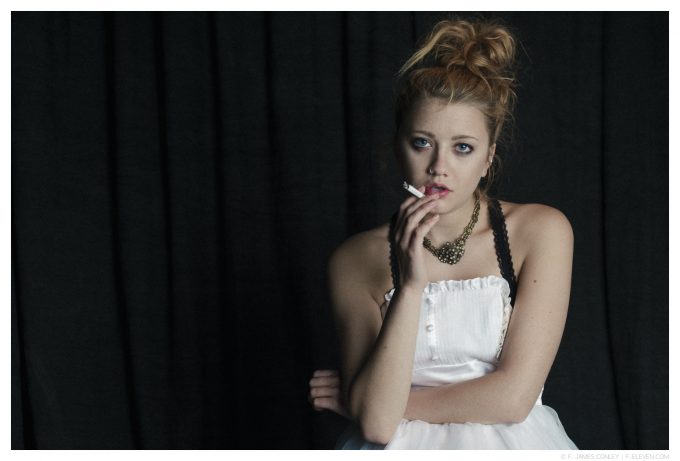
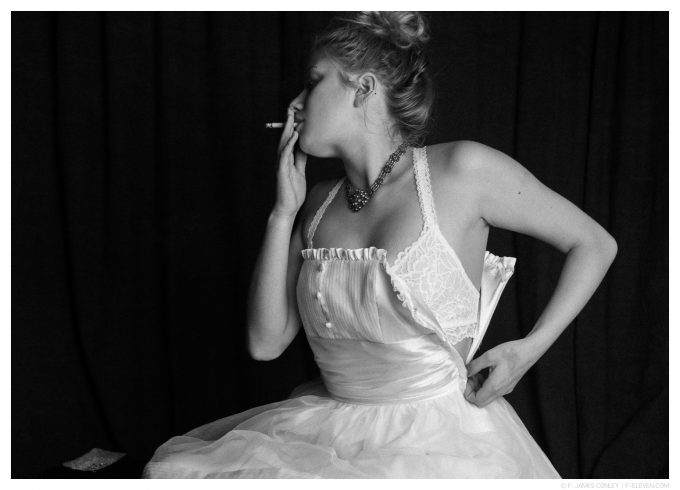
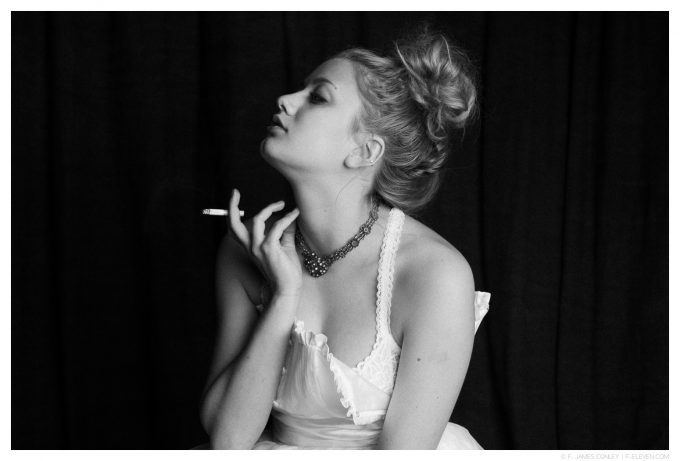
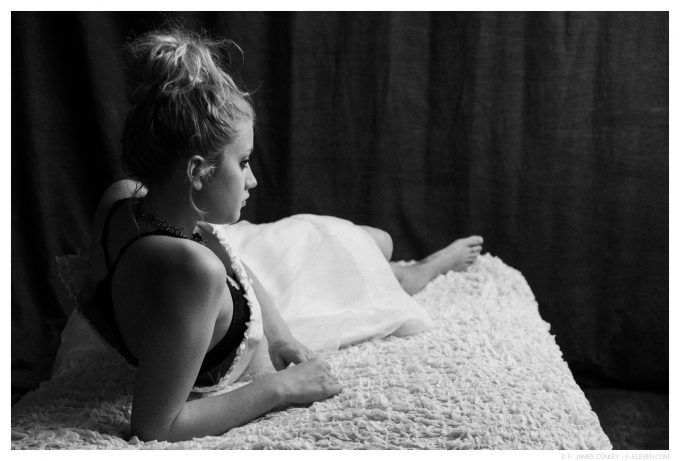
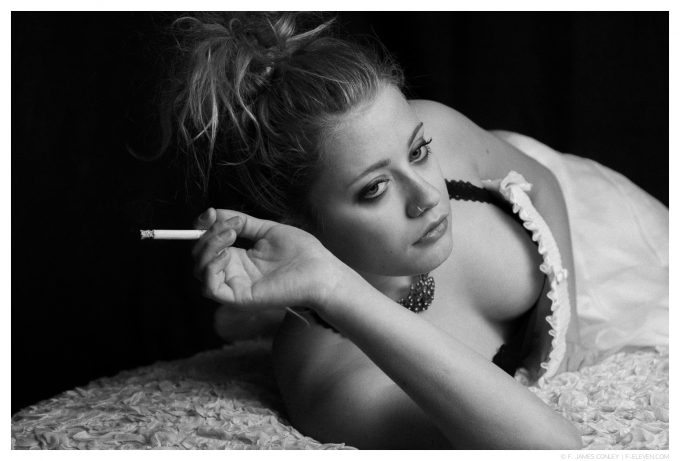
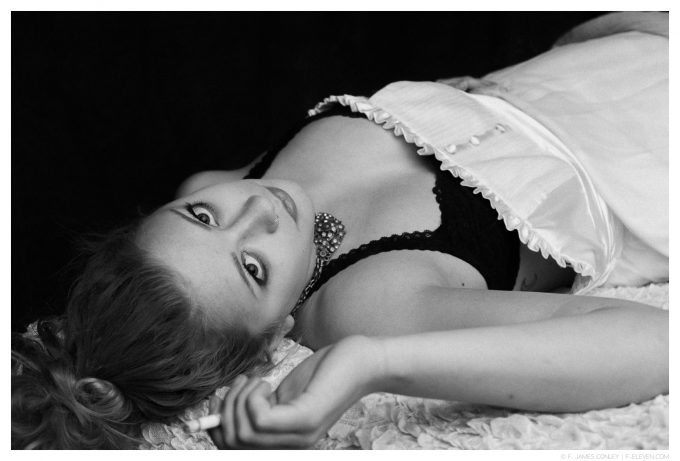
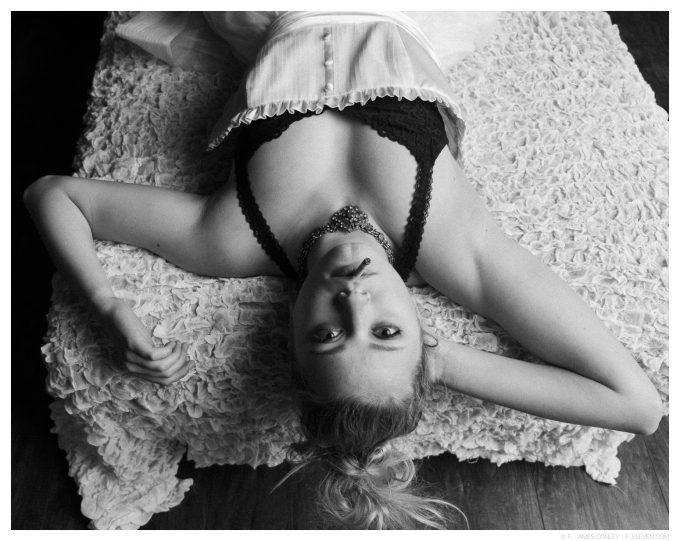
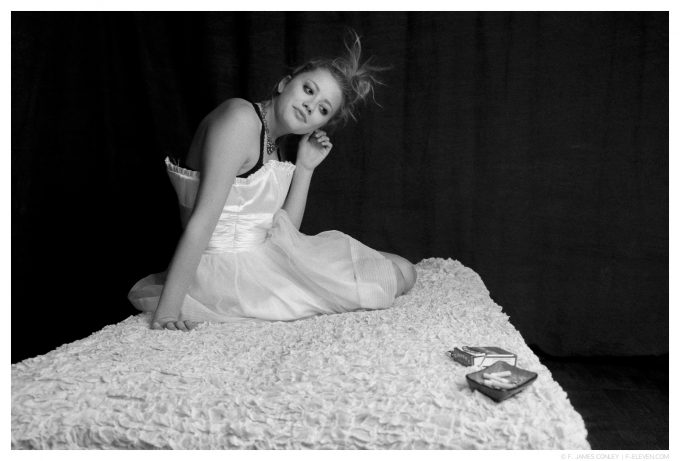


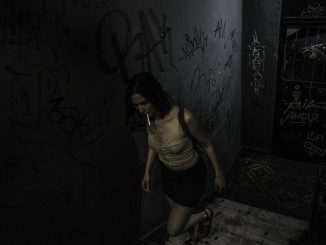
Oh please!!! You are talking about smoking!!! ( … which is bad) and not amazing photos! OK so… my girlfriend does not either feel comfortable in front of a camera so she usually asks me – can we have a couple of vodkas before we start and can I smoke? So??? Please… if you feel more comfortable and relaxed like that so please yes… It is up to the model how she feels more comfortable and relaxed!!! And it is up to her not you (you are NOT in FRONT of the camera) to decide.
Personally I find the photos absolutely great!!! And yes… I’m a VERY happy (Ex-Sony A7 series fanboy) now Fuji (Xpro-1 yeah I know it’s old) user because 1) It just feel so amazing in your hands and makes you love taking photos 2) The image quality (even the jpegs is something very special) and… not to mention… 3) Everyone is smiling when you show your cool camera and ask them… May I take a photo of you…
So please James keep sharing us your awesome photos!!!
These are great photos and the X pro does well in black and white -not as good as film but hey !!
I know that pro shooters use complex flash set ups more than amateurs . The total flash performance is the sum of the electronics in the flash unit and the camera electronics working in unison. There seems to be a lack of information out there about mirrorless and sophisticated flash set ups – so thanks for your input as it speaks to an issue that needs more airing.
OK…nice looking pics but what’s with the smokes??? Am I the only one who finds a girl smoking pretty much the biggest turn off I can imagine?? Nasty. Is photographing someone smoking now considered avant garde or is it just bad taste?
I totally agree, as soon as I saw the banner pic and title I though: ‘since when is smoking fashionable?’ Maybe in Turkey or Afganistan but it seems unfair to single them out. Pics of people smoking? Yuk yuk.
Please don’t put Turkey and Afghanistan in one basket unless you really have been to those places. 🙂
I never seen anyone smoke more than Italians (in Italy)
You are correct Afganistan was a lazy assumption on my part, and I have not been there. I have been to Turkey however. I looked up smokers per capita (goo.gl/0xsgjq) and Turkey is number 30, Italy 35 and Afganistan is 171 – apparently not very fashionable there either.
Have you ever considered that not everything a woman does is done with the intent of making her more attractive to you? Hope this isn’t coming as too much of a shock!
The images look good. You are definitely a good photographer, the light is really charming and good. Also you choice for B&W. But, there is only one thing: I don’t like the cigarettes at all! They do not look cool or fancy. You could have given her an old school camera instead.
However, keep on with your good work!
I’m with you there. When I see young, healthy-looking people smoking, it just makes me sad – and to be honest, mildly revolted. :^{ Smoking cut a couple of decades off my mother’s life, and I didn’t enjoy watching her die.
Were these taken in JPG set to Acros film with grain set to low? I really like the film like quality combined with ISO200, I usually get same results at ISO 800 and above with -4 on noise reduction.
Hi Iran. I shoot RAW all the time. I experimented with Acros as a Camera Profile in Lightroom (which I like a lot), but have found that its look doesn’t always fit well with the overall mood of a series. So instead I develop the images individually to get a mood which fits with the particular shoot. This set needed the grain, which definitely could have been provided by shooting at higher ISOs. (For street work, I usually prefer a high ISO on the X-Pro2 because the noise pattern is very Tri-X like.) But these were all shot at ISO 200 in RAW.
Interesting, thanks for the response. I love my pro 2 but miss the tilt screen when doing portraits outdoor.